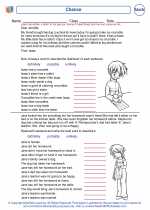Wind
Wind is the movement of air from an area of high pressure to an area of low pressure. It is caused by the uneven heating of the Earth's surface by the sun. When the sun heats the Earth's surface, the air above it also heats up. Warmer air is lighter and rises, creating an area of low pressure. Cooler air is denser and sinks, creating an area of high pressure. The air moves from the high-pressure area to the low-pressure area, creating wind.
Wind can be gentle or strong, and it can have a big impact on the environment. Wind is used as a source of energy through wind turbines, which convert the kinetic energy of the wind into mechanical power. Wind also plays a crucial role in the water cycle, as it helps to move moisture around the Earth, causing precipitation in the form of rain or snow.
Wind is measured using instruments called anemometers, which determine the speed of the wind, and wind vanes, which show the direction of the wind. The strength and direction of the wind are important factors in weather forecasting and planning activities such as sailing, flying, and outdoor events.
[Wind] Related Worksheets and Study Guides:
.◂Math Worksheets and Study Guides Second Grade. Probability

 Worksheet/Answer key
Worksheet/Answer key
 Worksheet/Answer key
Worksheet/Answer key
 Worksheet/Answer key
Worksheet/Answer key
 Worksheet/Answer key
Worksheet/Answer key
 Worksheet/Answer key
Worksheet/Answer key
 Worksheet/Answer key
Worksheet/Answer key
 Worksheet/Answer key
Worksheet/Answer key
 Worksheet/Answer key
Worksheet/Answer key
